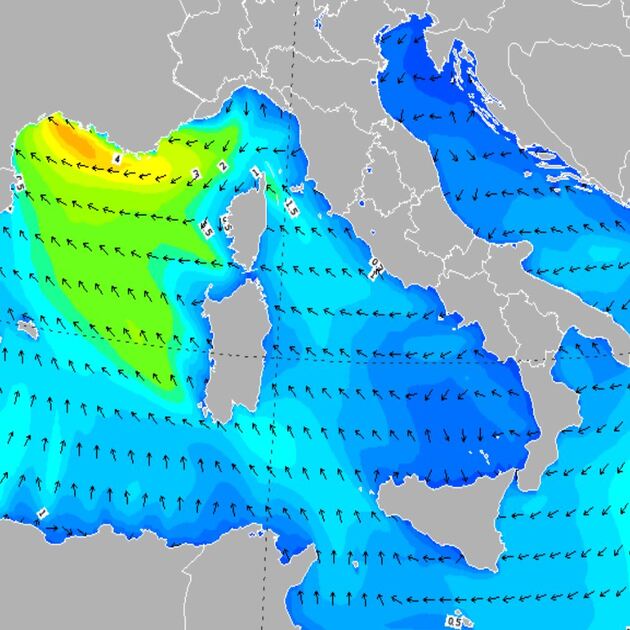

The NETTUNO forecasting system models sea conditions, such as wave height, by analyzing wind intensity over the sea surface
Operational services for monitoring essential oceanic variables e climate conditions
ISMAR brings extensive expertise to Earth Observation (EO), combining satellite remote sensing with multidisciplinary in situ monitoring. These complementary approaches help the Institute achieve its key scientific goals.
ISMAR’s EO activities are aligned with the major challenges identified at both European and international levels. These include advancing our understanding of the Earth’s climate systems and marine ecosystems, shaping innovative policies for sustainable resource management, protecting the environment, and addressing the risks posed by human activities and global change. ISMAR’s strategy follows the guidelines set by the Group on Earth Observations (GEO), whose main objective is to build a Global Earth Observation System of Systems (GEOSS). This system is designed to provide and analyze the data needed to inform decision-making processes and support the advancement of knowledge for a wide range of users—whether institutional, scientific, or private.
At the European level, ISMAR plays a key role in the Copernicus Programme, the EU’s most significant contribution to GEOSS. ISMAR’s Ocean Observation priorities are constantly updated to strengthen its position within Copernicus and in the various networks and programs it’s part of (SeadataNet, Seadatacloud, EMODnet, Jerico, EuroGOOS, IODP, GEBCO, CoCoNet, ESFRI). These updates are shaped by the latest European initiatives, including the Joint Programming Initiatives on Climate, Oceans, and Water.
Within this broader context, the “Decade of Ocean Science for Sustainable Development” offers a unique opportunity to enhance the observational systems needed to meet the goals of the UN’s “2030 Agenda for Sustainable Development.” The IOC General Assembly in 2019 approved the “GOOS Strategy for 2030,” which outlines the objectives and implementation plan for ocean monitoring over the next decade. This strategic plan, developed by the GOOS Steering Group and its Physical, Biogeochemical, and Biological Panels over five years, identifies Essential Ocean Variables (EOVs) and sets the measurement requirements for each. The Ocean Decade represents a rare chance to develop new research directions, pioneering observational technologies, and to deepen ISMAR’s international partnerships, contributing to the realization of the GOOS implementation plan.
ISMAR’s Earth Observation strategy will align with the GOOS Strategy, while also addressing the specific priorities of the Mediterranean’s marine and maritime sectors, as outlined in the BLUEMED initiative and its Coordination Support Action (BLUEMED-CSA).

